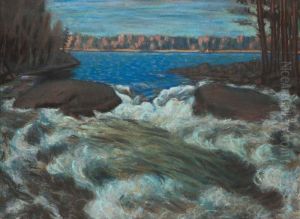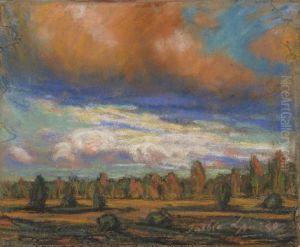Ants Laikmaa Paintings
Ants Laikmaa was a prominent Estonian painter born on May 5, 1866, in Araste, in the western part of Estonia, which at the time was part of the Russian Empire. He was one of the most influential figures in Estonian art at the turn of the 20th century and played a significant role in the development of Estonian national art during a period of burgeoning national identity.
Laikmaa started his artistic journey studying at the Düsseldorf Art Academy from 1891 to 1899, which was a significant center of art in the Baltic region and attracted many young artists from the area. His style was heavily influenced by Impressionism, and he was particularly known for his landscape paintings and portraits. He favored pastel as his medium, although he also worked with watercolors and oil paints.
After his studies, Laikmaa traveled extensively throughout Europe, the Middle East, and North Africa, which influenced his use of color and light. He was also one of the first Estonian artists to depict scenes from these regions, which introduced exotic subject matter into Estonian art. Upon returning to Estonia, Laikmaa became a key figure in the local art scene. He established an art school in 1907, which was among the first to use Estonian as the language of instruction, contributing to the national awakening of Estonian culture.
Throughout his career, Laikmaa was an advocate for Estonian art and culture. He was instrumental in organizing exhibitions and was a founding member of the Estonian Artists' Society. His works often reflected the beauty of the Estonian countryside and its people, and his portraits include many important cultural figures of the time, helping to document the era's intellectual heritage.
Laikmaa remained active in the art community until his death on November 1, 1942. He passed away in Kadarpiku, where he had settled later in life. His legacy includes not only his extensive body of artwork but also his influence on generations of Estonian artists through his teaching and cultural efforts. The Ants Laikmaa Museum, established at his former home in Kadarpiku, continues to celebrate his life and work.

